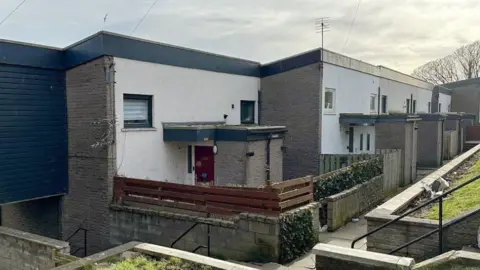Council reveals slow progress on faulty concrete homes
 BBC
BBCNegotiations to buy and demolish homes blighted by faulty concrete in Aberdeen are making slow progress, the council has admitted.
Only four out of 138 homeowners have indicated they will accept purchase deals, and the authority would like to be "further on", according to a senior official.
More than 500 properties, most of them council-owned, were found to contain reinforced autoclaved aerated concrete (Raac) in 2023.
The authority wants to buy the remaining privately-owned homes through voluntary acquisition, but there have been disputes about the valuations .
A total of 138 private properties and 366 council homes the Balnagask area were found to have Raac in their roof panels.
Aberdeen City Council then announced plans to demolish the council homes affected on safety grounds.
The council said it would offer market value for the privately-owned properties alongside other legal, home-loss and disturbance payments.
But some owners have complained they have been offered far less than their original purchase price.
Corporate landlord Stephen Booth told Monday morning's council meeting that four people had agreed deals, which were being progressed, while dozens more were engaged in discussions.
"We would like to be further on, but we are where we are," he said.
Mr Booth said they were trying to give the people involved time to come to a decision.
Members backed a motion from the ruling administration which noted measures required for compulsory purchase orders were not in place, and that voluntary acquisition remained the preferred way forward.
Council officers will meet some of the home owners on Tuesday, and a further update is expected later in the year.
What is Raac?
Raac stands for reinforced autoclaved aerated concrete.
It is a lightweight material that was used mostly in flat roofing, but also in floors and walls, between the 1950s and 1990s.
Raac is a cheaper alternative to standard concrete, is quicker to produce and easier to install.
But it is less durable and has a lifespan of about 30 years.
Its structural behaviour differs significantly from traditional reinforced concrete.
It is also susceptible to structural failure when exposed to moisture. The bubbles can allow water to enter the material.
Raac is often coated with another material, such as bitumen, on roofing panels. But this material can also degrade.
The Health and Safety Executive (HSE) said Raac is now beyond its lifespan and may "collapse with little or no notice".
